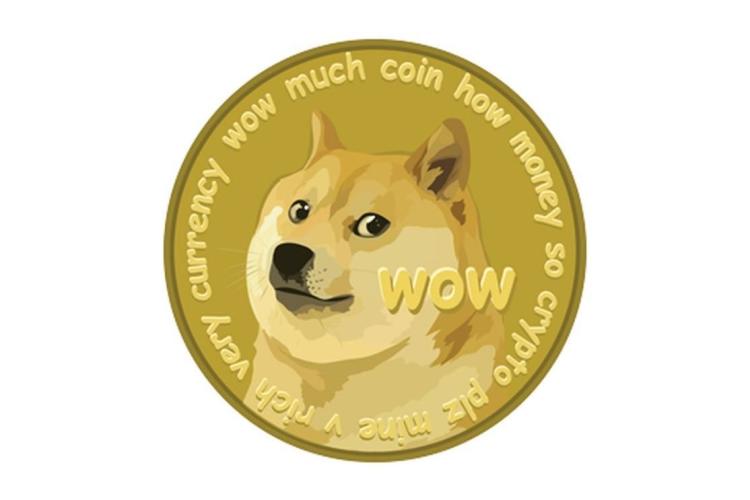The first chapter of the financial story during the pandemic focused on how quickly recovery took off, long before we had progressed on the virus or a vaccine. The second chapter shifted to a bewildering array of strange new financial instruments – bitcoin, NFTs, dogecoin, SPACs, so-called “meme stocks” – that lie behind the frontiers of traditional investing. Like the medieval mapmakers that labeled unexplored realms with mythical beasts, investors may wonder what lurks beyond the unknown horizon. Should they dare go there?
MEME STOCKS
For experienced investors, meme stocks are probably the easiest to understand, as they contain echoes of the dot-com boom of the ’90s. Rather than driven by company fundamentals and basic economics, meme stocks are influenced by investors on social media or online communities like Reddit. The two big names early in 2021 were GameStop, the brick-and-mortar video game store, and AMC Holdings, owner of the AMC movie theater chain. In January, GameStop gained 1,500% in two weeks, while AMC gained 300% in one day. Users on the Reddit forum r/wallstreetbets encouraged each other to continue buying to see how high they could push the share price of each company.
Skyrocketing stock prices for companies who can’t turn a profit echoes the dot com bubble, but at least those companies held the potential of capitalizing on new technology. AMC hasn’t earned positive revenue in nearly five years, while GameStop has posted a loss every year since 2018. Both are businesses increasingly squeezed out by online stores and streaming services.

With GameStop, I can’t help but remember an episode in The Simpsons. For the first time in decades, octogenarian tycoon Mr. Burns tries to rebuild his fortune by investing in his favorite “blue chip” stocks, including “U.S. Hay,” “Trans-Atlantic Zeppelin,” and “Baltimore Opera Hat Company,” only to lose all his fortune from investing in outdated stocks. While the business models of AMC and GameStop aren’t that antiquated, their prospects for the future seem dim, and at odds with their sky-high stock valuations.
What meme stocks do illustrate is the increasing ability of investors to mobilize online in unconventional forums and significantly and persistently move stock prices. An earlier, more harmless iteration of this was the “flash mobs” of the early 2000s. Investors would be wise to pay greater attention to the power of collectivized individual traders going forward.
SPACS
SPACs, or Special Purpose Acquisition Companies, are essentially empty shell companies created to allow private companies to go public outside of the standard initial public offering (IPO) process.
Investors typically buy shares at a standard $10 share price. The SPAC then takes the money raised and looks for an existing private company to merge with, allowing the private company to become public without meeting the typical regulatory requirements of an IPO.
SPACs have been around for more than 30 years, though they attracted little notice until the pandemic. According to Bloomberg, SPACs raised $13.6 billion in 2019, $83.3 billion in 2020, and had already raised $73 billion in just the first two months in 2021. Notable SPACs over the past year include DraftKings, Virgin Galactic, and electric truck maker Nikola.
There is often an admirable “David vs. Goliath” story told about SPACs, bringing private companies public without giving traditional Wall Street its exorbitant cut. However, in most cases, the sponsors of SPACs have merely replaced their traditional Wall Street counterparts, thanks in part to the 20% fee SPAC sponsors typically receive. The incentive is lucrative for sponsors, regardless of whether the new company succeeds.
There’s plenty of opportunities to innovate the way that companies come into public markets. However, an opaque structure with a gaggle of celebrity endorsers seems like more of a sideshow than a step forward.
CRYPTOCURRENCIES (BITCOIN, DOGECOIN & OTHERS)

Bitcoin and other cryptocurrencies were designed as a digital alternative to traditional currency. The concept of virtual money seems simple enough, though they have yet to truly fulfill that promise. Some professional athletes are accepting millions of dollars’ worth of salary in bitcoin rather than U.S. dollars. Yet despite traditional outlets starting to accept bitcoin as payment, transactions remain slow and costly.
While Bitcoin users have aspirations for it becoming a global currency, global currencies are not subject to the whims of a tweet. Bitcoin has functioned primarily as a vehicle for day-traders, undermining its ability to serve as a reliable form of payment.
In May, bitcoin’s price dropped 50% within a month, from a high of $63,000 per bitcoin to a low of $31,643. For comparison, over the same period, the euro fluctuated between $1.19 and $1.21. It is difficult to confidently pay for anything when the value of its currency can change by 20% in reaction to a tweet from Elon Musk.
While in the same realm as other cryptocurrencies, dogecoin has more in common with the meme stocks noted above. It started as a parody of cryptocurrencies, was valued at $0.01 for several years, and has a Shiba Inu dog as its mascot. Its founder recently told the Wall Street Journal, “the idea of dogecoin being worth 8 cents is the same as GameStop being worth $325. It doesn’t make sense. It’s super absurd. The coin design was absurd.”
Of all the recent innovations in digital currency, bitcoin and the blockchain technology that underlies it looks to have the most staying power. While we may not be buying popcorn at the movies with bitcoin anytime soon, the technology has a wide range of use cases that will be important to follow going forward.
NFTS

Unlike the three prior assets, NFTs, or non-fungible tokens, are not strictly financial instruments but rather sit firmly in the realm of art and collectibles. Similar to bitcoin or the SPACs, the format has been around for a while but caught on over the past few years.
The NBA has been an early leader in NFTs, via the NBA Top Shot market. NBA Top Shots are highlight clips from NBA games that function as digital trading cards. Instead of a piece of cardboard with a player’s picture on the front and stats on the back, you own the video file of a basketball highlight or package of content.
Each one has a digital marker (token) similar to bitcoin, which gives it a unique certificate of authenticity. For example, while the video of a Lebron James dunk sits on YouTube for anyone to see, the Top Shot will contain the unique token marking it as “1 of 1” – the “official” video clip,” and can be bought, sold, or traded in online marketplaces. Earlier this year, an NFT of a Lebron James dunk against the Los Angeles Clippers sold for a record $208,000.
If it doesn’t make much sense, you’re not alone. At their most basic, NFTs derive their value, like most collectibles, from their scarcity. In an extreme example, an NFT of a piece by digital artist Mike Winklemann sold for $69.3 million earlier this year at a Christie’s auction.

To draw a line in the world of physical collectibles – anyone can buy a replica T206 Honus Wagner baseball card from 1909 for $5 on eBay, good as new and free of wear and tear. However, in comparison, an authentic Wagner card was sold in October 2020 for $3.25 million, and none of the 40 or so originals in existence are thought to be worth less than $450,000. Visually and physically the reprint will be superior – crisp corners, clean image, vivid colors. The value of the original card is derived from its scarcity and its backstory, similar to the appeal of NFTs.
WHAT DOES ANY OF THIS MEAN?

Will any of this stuff be around in a few years? Maybe.
Is this just a symptom of collective boredom? Quite possibly.
What the heck is going on? Honestly, it’s hard to say.
There are certainly echoes of previous manias going back to the Dutch tulip craze of 1637. There is speculation that an outbreak of plague in Amsterdam spurred people to take risks and speculate in ways (like bidding up the price of tulip bulbs) that they wouldn’t have under normal circumstances.
Scottish author Charles Mackay wrote 200 years later in 1841 that “every age has its peculiar folly: Some scheme, project, or fantasy into which it plunges, spurred on by the love of gain, the necessity of excitement, or the force of imitation.” It is reasonable to wonder, 180 years later in 2021, if we aren’t playing the same old tune.
Did a year spent stuck at home, along with rising middle- and upper-class wealth, restricted discretionary spending, easy access to markets, and sheer boredom, push speculation away from stocks and into frontiers of investing? After all, even at the height of the dot com bubble, you didn’t see stock ticker symbol graffiti while driving around the Beltway.

If nothing else, investors in bitcoin, SPACs, NFTs, and meme stocks have gotten a thrill ride and dopamine hit that they couldn’t otherwise get from a world under quarantine.
SO WHAT?
Is it possible to make money investing in any of these things? Sure, but so what?
At any given time, there are large groups doing things with their money that make no sense for most of us. A lot of it may look crazy. Some of it may look enticing.
At the end of the day, successful investors know what fits their plan, and what doesn’t. There are plenty of investable assets that may produce returns over time but aren’t the type of investments they could buy and hold appropriately long enough to produce those returns.
Morgan Housel drove this point home recently when he wrote that investors get in trouble “when they don’t know what game they’re playing. They’re at risk of taking their cues and advice from people playing different games, which can lead to risks they didn’t intend and outcomes they didn’t imagine.”
For most, these are not the investments that a successful retirement is built on. These aren’t part of the game we’re playing. We can be comfortable to look on with curiosity about which ones will stick around and which are consigned to the dustbin of history.
In a masterful article examining SPACs in The New Yorker, writer Charles Duhigg draws a clear line to previous eras when financial inventions such as the mutual fund, credit card, junk bond, and mortgage bond went through periods of initial mania, skepticism, and crash. Each innovation was pumped up as the next big thing, then reviled as the latest fad gone wrong, before settling comfortably into middle age as a ho-hum part of daily life.
Bitcoin, SPACs, and the rest may one day make a similar transition from the exotic to the commonplace. Until then, there will likely be growing pains as these new frontiers are defined.
This article is intended for informational/educational purposes only and should not be construed as investment advice, a solicitation, or a recommendation to buy or sell any security or investment product. Please contact your financial professional for more information specific to your situation.
Presented by Christopher J. Rivers

